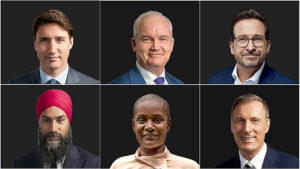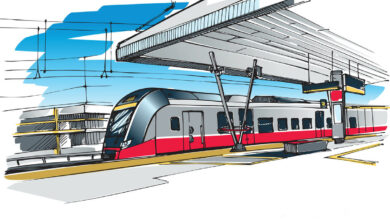A Minority Government Once Again

With three days left before election day on Monday, September 20th, it looks like the result could be another minority government. This could come down to a flip of a coin, with the NDP playing a significant role again with just over 20% in the polls. The hard-core supporters will stay with their candidate of choice, but undecided and a soft swing NDP vote could go to the Liberals.
The big questions are where the undecided vote lands?
Unfortunately for Erin O’Toole and the Conservatives, Ontario has been a historically Liberal-leaning province, with fairly well-established voting patterns since the turn of the century. Since 2000 excluding the 2000 federal election, when the Conservative party didn’t exist in its current form, there have been six federal elections and five provincial ones. The Liberals have won four out of five provincial elections in Ontario and three out of five federal ones.
Going over all the numbers for this election suggests that, even with a small Liberal lead or loss, the Liberals will still win a large majority of the seats in the GTA due to their vote efficiency. However, if they take a larger lead of high single digits or more, they’ll win almost all the seats in this key region. Conversely, a large Liberal loss will result in a huge swing of seats towards the Conservatives and O’Toole becoming the prime minister.
In order for the Conservatives to win most of the seats in the GTA – which they’d need to do if they have any hopes of a majority – the Liberals would have to be losing Ontario by roughly 10 points, a margin that no pollster currently has the Conservatives reaching. Once again, the GTA will be holding the balance of power in this election – and may very well save the Liberals.
Parliament has 338 seats, so in order to win a majority government, a party needs to elect 170 or more MP’s. This secures their ability to pass all key measures without needing another party’s support and sets up for four years of governing.
When Justin Trudeau went to the polls in hopes of four years of majority reign, another minority outcome would be a blow to Trudeau and potentially his team’s desire to see him continue to lead the party. Following the final leaders’ debate about what a change in government would mean, he defended calling the election, imploring Canadians to take this as an opportunity to be decisive about who they want shaping the future of Canada suggesting that his vision won’t be supported in a minority.
It’s starting to look like the NDP soft vote may go to the Liberals, and if Quebec shifts from the Bloc and the Conservatives to endorse the Liberals and Trudeau would form the next government. The one thing about the Liberal party federally is that they know how to win elections. They have an uncanny political nose about the lay of the Canadian landscape.
The front-running federal parties are in a virtual tie, with the latest polling numbers showing the Liberals leading the Conservative Party with a little more than one percent between them. The polls are showing the Liberal Party has 32.2 percent support of Canadians surveyed, closely followed by the Conservatives at 31.2 percent. The NDP is at 18.9 percent, and the People’s Party at 6.7 percent support with the Green Party at 3.8 percent. This is shaping up as a close horse race with either party winning by a nose.
If Jagmeet Singh can hold on to his support, he’ll effectively deny the Liberals their ability to form a majority government and could even undermine their ability to form a minority government. Also, at 6.7 percent, the PPC is an important factor for the Conservative Party in that those disaffected former Conservative voters may decide to send a message and not vote for their original pick or party.
One other issue that will affect this federal election outcome is the way in which COVID-19 has played havoc with the voters and their ability to get out and vote. On a personal note, most of my family voted in the advance polls this past weekend with no real wait time or issues. But others that l had spoken to have had issues getting into the polls and having to wait for hours before they had a chance to cast their ballots. These types of issues generally tend to favour the Liberals and the NDP, and the Conservative base traditionally does not take well to waiting in line to vote. COVID-19 will play, a significant factor in voter turnout which generally favours the Liberals and the NDP again.
While the election is still too early to call, a majority government is likely no longer in the cards for any party. Finally, l will go out on a limb and call the Liberals winning a minority government on Monday (20).
Vince Nigro/MS








Redes Sociais - Comentários